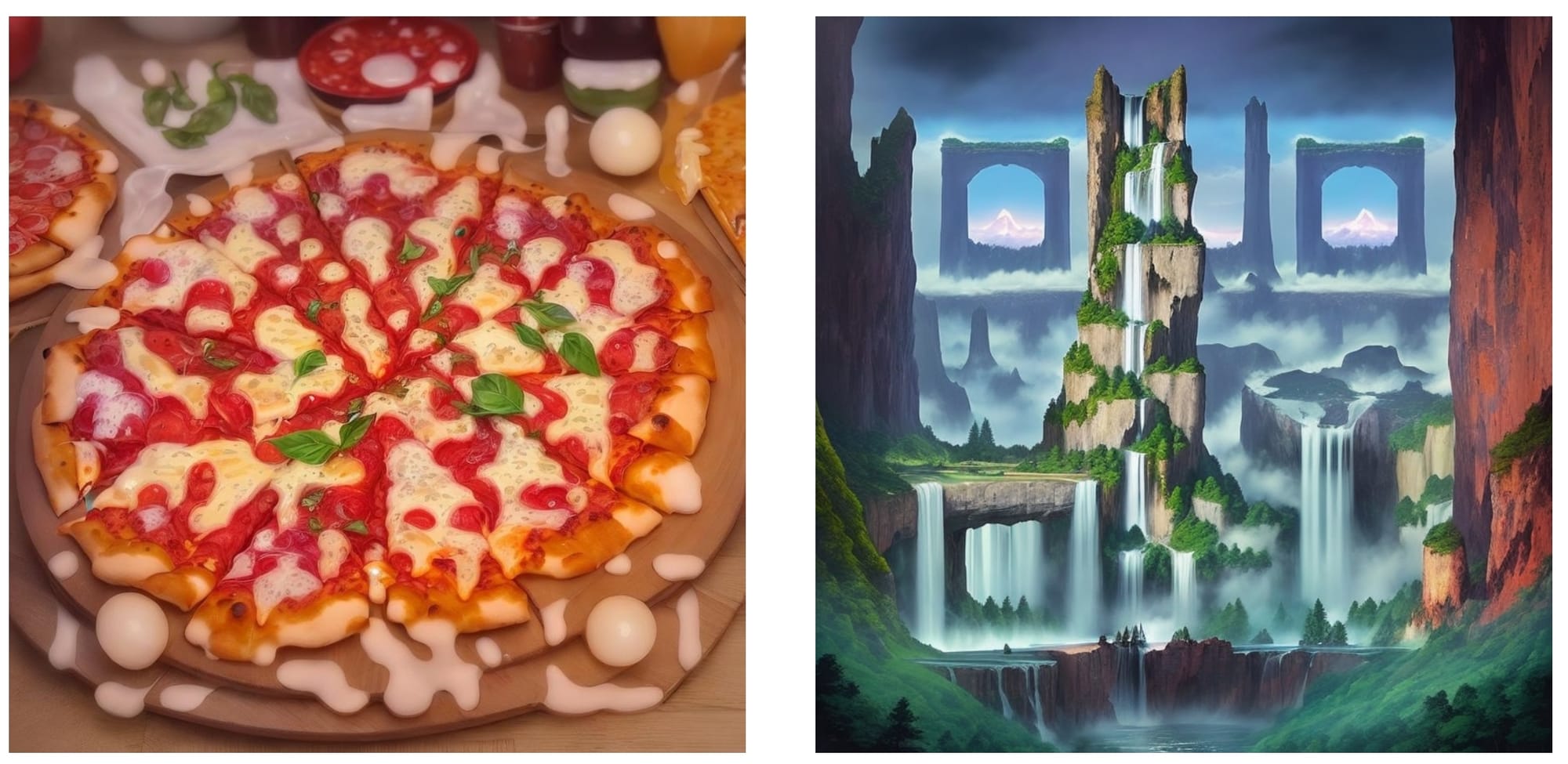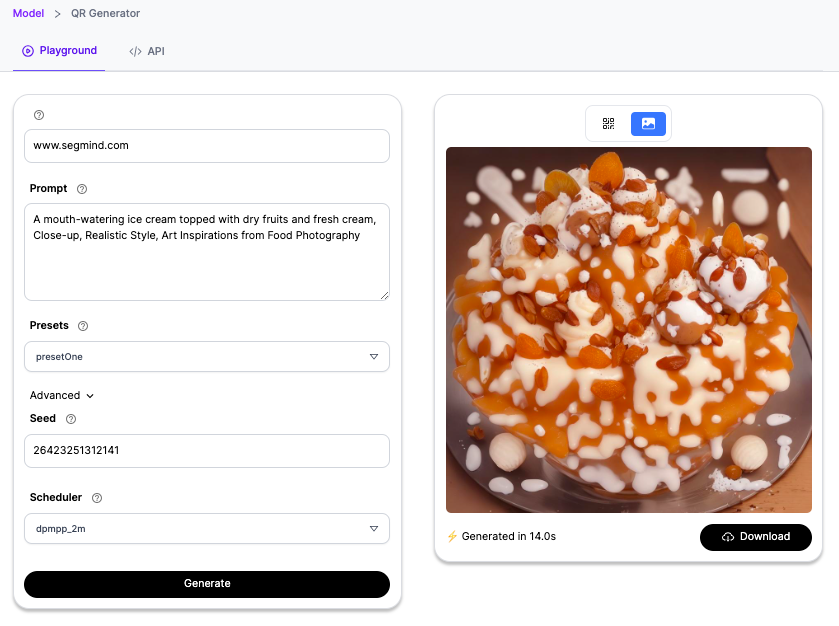Introducing the Segmind Stable Diffusion QR Code Model
The humble QR code gets a Generative AI upgrade. Learn how to get started with creative QR codes that make your brand stand out.

QR codes are a ubiquitous part of our lives. They're used in everything from product packaging to restaurant menus to marketing campaigns. But what if QR codes could be more than just functional? What if they could be beautiful and engaging as well?
That's where the Segmind Stable Diffusion QR Code model comes in. This model uses the latest in artificial intelligence technology to generate QR codes that are both scannable and visually appealing.
The model works by using any image uploaded by the user and embedding it onto a QR code that redirects to a URL of the user's choice. The result is a QR code that is both functional and visually interesting. The Segmind Stable Diffusion QR Code model can be used to generate QR codes in a variety of styles, from abstract to realistic. You can also use the model to add specific elements to your QR code, such as a logo, a person's face, or a landscape.
The model is easy to use. Simply upload an image of your choice to the Segmind API playground, enter the relevant URL, and click generate. Voila, the model will generate a QR code with your image for you. You can then download the QR code and use it as you see fit.
Under the hood
The Segmind Stable Diffusion QR Code model is based on the advanced architecture of Stable Diffusion 1.5 ControlNet. It uses image pairs, consisting of QR codes and art, to train the model and extend the UNET module. ControlNet stands out due to its unique neural network structure, which comprises both a "locked" and a "trainable" copy of the neural network blocks. While the "trainable" copy learns your conditions, the "locked" copy maintains the integrity of your original model. Large diffusion models, like Stable Diffusion, can be improved by using ControlNets to accept conditional inputs such as edge maps, segmentation maps, keypoints, and more
The Segmind Stable Diffusion QR Code model is an effective tool for producing captivating and interactive QR codes. It's suitable for those who want to enhance their marketing campaigns or create visually appealing QR codes for apparel or merchandise that link back to a specific URL. This model offers a great solution for achieving creative designs. The Segmind Stable Diffusion QR Code model is a powerful tool that can be used to create a variety of eye-catching and engaging QR codes. Whether you're looking to add a touch of creativity to your marketing campaign or design apparel or merchandise with a visually appealing QR code that scans back to the URL of your choice, this model is a great option.
How to use QR codes
QR codes, or Quick Response codes, encode data such as text, URLs, or other information in a pattern of black and white squares. They can be scanned by a smartphone or other device with a QR code reader.
To use a QR code, simply hold your device up to the code and scan it. The device will then decode the code and display the information that is encoded.
Stable diffusion QR code use cases
Artistically designed QR codes can be used in a variety of settings, including:
- Business cards: A business card can feature a QR code that is artistically designed. When scanned, the user will be directed to the person's website, portfolio, or LinkedIn profile.
- Art installations/exhibitions: Customized QR codes can be utilized by artists in their installations or displayed alongside their artworks at exhibitions. These codes can provide access to supplementary content such as the artist's statement, process videos, or other works.
- Restaurants: QR codes found on menus have gained popularity, especially during the pandemic as a safety measure. A tastefully crafted QR code can not only embellish the menu design but also provide useful features such as linking to the complete menu, exclusive offers, or even simplifying the ordering process.
- Product packaging: Product packaging can have QR codes that link to more information, tutorials, or promotions. By integrating the code into the design, rather than just adding it as a functional feature, the packaging can look and feel better overall.
- Events and concerts: QR codes have versatile applications, including serving as digital tickets, programs, or links to supplementary content such as artist bios, event particulars, maps, or merchandise sales. An aesthetically pleasing QR code can enhance the event's visual brand.
- Murals and street art: QR codes with artistic designs can be incorporated into murals and other forms of street art. These codes can redirect users to additional information about the artist, the artwork, and related works, or even serve as a means for directly supporting the artist through donations.
- Fashion: Fashion designers have the option to add QR codes to their clothing designs. These codes can connect to the designer's other collections, explain the inspiration behind the design, or offer care instructions.
- Educational resources: Museums, zoos, and botanical gardens can utilize QR codes to provide access to supplementary educational materials. This may include in-depth information on exhibits, interactive learning experiences, or opportunities to participate in conservation initiatives.
- Marketing campaigns: Customized QR codes can be utilized by businesses as a component of their marketing strategies. For instance, they could design a scavenger hunt where each code connects to a clue, or it could lead to exclusive digital content, discounts, or rewards.
- Real estate: QR codes can be added to real estate signs or flyers to provide convenient access to virtual tours, extra property information, or the real estate agent's contact details.
In addition to the benefits mentioned in the article, artistically designed QR codes can also:
- Improve user experience: A well-designed QR code can be more user-friendly than a standard QR code, making it easier for people to scan and understand.
- Increase engagement: An eye-catching QR code can be more likely to capture people's attention and encourage them to interact with it.
- Create a more memorable brand experience: A unique and visually appealing QR code can help to create a more memorable brand experience for consumers.


